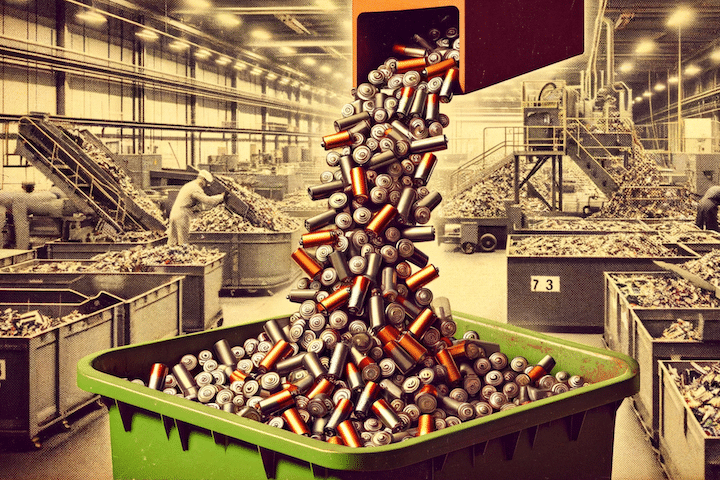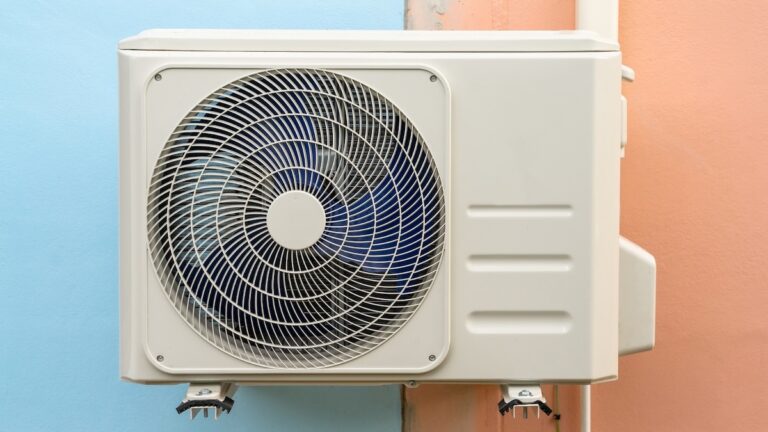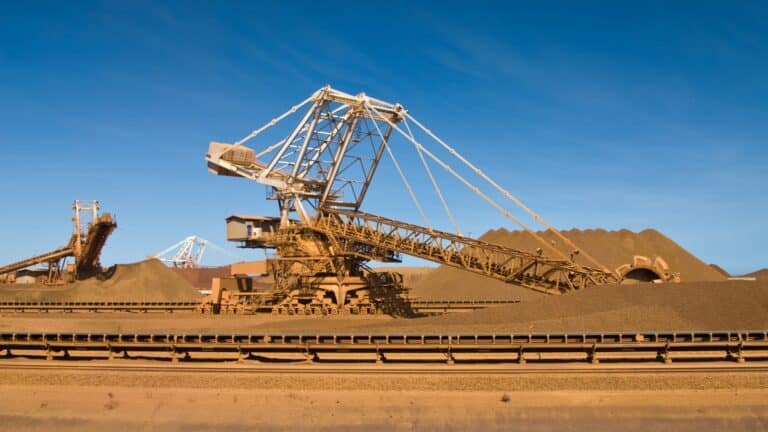Power prices are expected to soar under new tax cut and spending law
In states without policies to drive renewable energy, power prices could surge as federal tax incentives for clean energy disappear, according to Energy Innovation, a think tank.
Current Access Level “I” – ID Only: CUID holders, alumni, and approved guests only
Melissa Lott: [00:00:00] Today we’re going to talk to a doctor, but not your typical doctor. [00:00:03][3.1]
Ian Hamilton: [00:00:03] Basically, I am a buildings doctor so that somebody who looks at buildings, looks at how they’re working, looks at whether they’re working well, you know, are they healthy building. [00:00:12][8.4]
Melissa Lott: [00:00:13] So like looking at all the ways that buildings keep us healthy and safe or how they can make us vulnerable and sick. [00:00:19][6.6]
Ian Hamilton: [00:00:21] My name is Ian Hamilton and I’m a professor of energy, environmental and health at University College London. [00:00:26][5.0]
Melissa Lott: [00:00:27] When you think of health, you might not think of buildings, but they go hand in hand. Buildings protect us from the elements. They keep us healthy and safe in the middle of storms and hot summers and cold winters. They can also filter out air pollution, but buildings also contribute to another danger to our house. That’s climate change. [00:00:44][17.3]
Ian Hamilton: [00:00:45] So buildings each year are responsible for around 26% of carbon emissions. And when you add on construction related emissions, so that’s the materials that we build buildings with the steel, the concrete, the glass. That’s another 10%. [00:01:01][15.8]
Melissa Lott: [00:01:02] That means that buildings account for about one third of global emissions. When you consider both the embodied emissions and the construction materials and the energy used to run the buildings. And as a buildings, Dr. Ian has his work cut out for him. [00:01:14][12.5]
Ian Hamilton: [00:01:15] Every year we’re adding the floor area of Japan to the world. Okay. So we have between now and 2060, an estimate that a city the size of Paris is being added every week. [00:01:27][12.2]
Melissa Lott: [00:01:31] That means that we need to do two things at once. We need to retrofit tons and tons of existing buildings while also changing the way that we build new ones. In this episode, we’re zooming in on residential buildings like homes and apartments. How do we decarbonize them? This is the big switch. A show about how to rebuild the energy systems that are all around us. I’m Dr. Melissa Lotte and I’m the director of research at Columbia University’s Center on Global Energy Policy. In our last episode, we laid out the four big steps to decarbonizing buildings in general. So first, we have to make them energy efficient. And then second, we have to replace all those old oil and gas appliances with electric ones. Third, we have to make sure that all the electricity that we’re sending into our home is coming from zero carbon resources like wind and solar and nuclear. And finally, the fourth step is that we have to organize people to support the rules that can make this all happen. In this episode, we’re digging into those first two steps energy efficiency and electrification. And we’re going to look in particular at residential buildings. These are our homes. So how do we make the places where we live more energy efficient? And what things do we need to replace to get to net zero? In Hamilton, the building’s doctor takes us on a virtual tour to explain. [00:02:49][78.1]
Ian Hamilton: [00:02:50] So you and I are standing out on the lawn and we’re looking at this lovely ranch home. And we see that it’s, you know, maybe it’s made of brick, maybe it’s, you know, wood framed. It’s probably got a gas connection for either it’s hot water, maybe it’s heating system, maybe it’s cooking system. [00:03:06][16.0]
Melissa Lott: [00:03:07] So imagine we’re standing outside looking at this single family ranch home, the kind of home that you might see in any small town or city in the US. And we’re about to go through it room by room to figure out how to decarbonize it. [00:03:19][12.1]
Ian Hamilton: [00:03:20] One of the first things that we need to envision is the insulation. Levels of those walls need to be addressed. The rules need to be addressed. So that means putting an attic insulation for homes that can. It means adding insulation into the existing wall structure. [00:03:34][13.7]
Melissa Lott: [00:03:35] This is sort of a given. We know that we need to insulate our homes to make them more efficient. [00:03:39][4.1]
Ian Hamilton: [00:03:39] And for decarbonization, you know, adding insulation is going to help reduce demand. So then that means that the next thing you do, which is about adding in heating system or cooling system, is going to be smaller and it’s going to be able to work more efficiently because that building can better hold its heat or hold its cooling. [00:04:00][21.0]
Melissa Lott: [00:04:01] But insulation isn’t just about saving energy and reducing emissions. Sure, it’s one giant piece of decarbonizing homes that we absolutely need to get out of the way. But do you remember back in episode one of the show when we covered the big freeze that knocked out Texas’s power grid in February of 2020? [00:04:16][14.8]
News anchor: [00:04:19] Pipes are freezing and breaking across central and north Texas right now, faster than plumbers can get out to fix them. Every plumber in. [00:04:26][7.1]
News interviewees: [00:04:26] Town is backed up. The phones are ringing off the. Hook and the water is flooding. And it’s like it’s like the Titanic in here. [00:04:33][6.7]
News anchor: [00:04:33] What was supposed to be rolling blackouts to protect electrical grids has turned for some into days without heat. [00:04:41][8.5]
News interviewees: [00:04:42] It got down to about 51 degrees in our house by 6:00. And we have a two month old baby. We were snuggled up, but it was just a little bit too much. [00:04:50][8.0]
Melissa Lott: [00:04:51] We need insulation so that we can stay safe and healthy in our homes when the things that we depend on, for example, the power grid break, remember our homes protect us from the elements. Energy efficiency doesn’t just mean less carbon pollution. It also means better protection during heat waves and winter storms, especially in an increasingly unpredictable climate. And how do we have more efficient homes, insulation? [00:05:15][23.7]
Ian Hamilton: [00:05:16] That’s going to make a big difference. Then for the next thing we need to address, which is, you know, at this moment in time, if we wanted to get to decarbonization and we said, okay, let’s let’s go towards electrification. So we’re going to think about heat pumps as being a good solution for the heating and cooling needs of that home. [00:05:32][16.0]
Melissa Lott: [00:05:33] Well, keep coming back to energy efficiency throughout this episode. But now we’re moving on to the second big player in building decarbonization. I’m talking electrification, which means moving from fossil fuel powered appliances to electricity powered ones like heat pumps. [00:05:47][14.2]
Ian Hamilton: [00:05:48] Now, a heat pump is we everybody already has. One is a refrigerator. [00:05:52][4.2]
Melissa Lott: [00:05:54] You heard that right? You already have a heat pump and it’s called your fridge. It works by sucking the heat out of the fridge using a substance called a refrigerant. And that refrigerant then dumps heat in the space around the fridge. Like, have you ever put your hand behind a fridge back where the coils are? It’s hot, right? That’s the refrigerant moving through the coils, releasing heat that is picked up from inside the fridge. And an air conditioner works roughly the same. It absorbs heat from inside a home and then it dumps it outside. But the beautiful thing about heat pumps is that they can both heat and cool and heating is where they shine. [00:06:27][33.8]
Ian Hamilton: [00:06:28] The heating system in most homes here in North America, say is responsible for around a quarter or two to a half of your energy use in the home. And most of that is being done through. You know, it could be a boiler that you have and it’s feeding hot water through radiators or it could be an air furnace, which is then heating the air and circulating that around or in some cases older buildings as well, but also built with electric resistance heaters, you know, baseboard heaters. [00:06:53][25.2]
Melissa Lott: [00:06:54] All of these conventional heating systems, they generate new heat, gas heaters, ignite a flame, converting chemical energy and the thermal energy electric heaters warm. Heating elements, converting electricity into thermal energy. Wherever you do a conversion like this, you’re going to lose a lot of energy. Heat pumps, on the other hand, they just pump heat. They move it around from inside to out or outside to end. And just like your fridge, they do this using a substance called a refrigerant, which both absorbs and releases heat, which is much, much more efficient than generating new heat. If you want one of these heat pumps, you can get them pretty much anywhere at a home improvement store or from your heating and cooling contractor. And you can approach it in one of two ways. Either you can get a central unit that will send air throughout your house, those big air ducts that you might have seen up in your attic or if you want to, you can use a Douglas mini split system. What this means is that you put a machine in each one of your rooms so that you can control the temperature one room at a time. So we’ve been on our line, we’ve been looking at the house. We’ve now made it as efficient as possible, and we’ve figured out our heating and cooling. So now we step into the house and I’m thinking about coming home and washing my hands, and I want to do it with warm water. How do we heat water today and how do we need to do it differently in the future? [00:08:10][76.5]
Ian Hamilton: [00:08:11] So today’s hot water is mostly heated by an electric resistance heater. So these are elements that sit inside a big hot water tank. And we could also heat that with gas. So, you know, literally lighting a small fire under a tank and boiling it. But what we’d really like to be able to do is make use of the free energy that’s already in the home with the temperature of the air. And so heat pump, hot water tanks are able to do that. [00:08:37][25.4]
Melissa Lott: [00:08:37] And they’re back. This is another place where heat pumps can shine heating water. Before we were talking about pumping heat into or out of a space, so into or out of air. But now we’re talking about pumping heat into water. Again, this is very different from a gas boiler or an electric hot water heater or even a tankless water heater. All of those generate new heat, but heat pumps actually absorb heat from the surrounding air, say, in your basement. And then they concentrate it into your hot water tank at Home Depot or Lowe’s. These are called hybrid or hybrid electric water heaters. And just to give you a sense of how awesome these things are, if you put one unit of electricity into them, you get two or three units of heat out of them because you’re using all this free energy that’s all around you right now. Or as Ian puts it. [00:09:28][50.7]
Ian Hamilton: [00:09:28] Instead of a gas system where you’re buying a dollar of gas and you’re getting $0.87 of hot water out. A heat pump will be buying a dollar of electricity and getting $3 of heating hot water out. [00:09:39][10.6]
Melissa Lott: [00:09:39] So when we look at how we heat water today, the bottom line is that heat pump water heaters are just way more efficient and that translates into real savings according to energy starkov. Switching to a heat pump water heater could save you hundreds of dollars per year. So I’ve come home. We walked in through the front door, you know, we’ve washed our hands, left our shoes, and now we’re going to make dinner. So how do we cook today? What kind of energy do we use? And in a net zero in a decarbonized future, how different does cooking look? [00:10:14][34.4]
Ian Hamilton: [00:10:15] So right now, we use electricity for conduct of cooking on the stovetop. So that is heating a surface up and the pot gets hot and boils the water. And we’re going to move from that, which is about 75% efficient to induction cooking, which is effectively the whole pot getting warm and transferring all of that energy to boil the water, which is about 86% efficient. [00:10:37][22.2]
Melissa Lott: [00:10:40] Induction stoves or induction ranges are another newer technology that you might start hearing about. So with a conventional electric coil or electric cooktop, we also call them glass cooktops. What you’re doing is heating up this element, which then heats up a pan, which then heats up your water. That’s a lot of steps, but an induction stove takes out a step. Basically, it sends an electromagnetic current into the pan, so the pan becomes the heating element and so it gets warm and then transfer that heat directly to your food. [00:11:07][27.8]
Ian Hamilton: [00:11:08] So it’s much more efficient. And the other thing is, by comparison to gas it, which is only 40% efficient, it’s not releasing any air pollution. So when gas is burnt, it obviously creates a bunch of particles that are related to the gas. And one of the big sources are basically nitrous oxide and carbon monoxide and lots of things that we don’t really want in the home. And so if we can avoid putting gas into the home to be burnt inefficiently and causing air pollution is a good thing. And if we can take clean cooking that clean electric cooking and make it as efficient as possible through inductive cooking, that’s going to be a big win. And then with our ovens being able to use what’s called convective, so this is heating up an element of the back and blowing hot air across our food compared to having an element sit there at the bottom. And, you know, everybody knows that that oven that’s too hot on one side or too hot in the other. This is the problem you get. So convective cooking, there’s a lot more even with its heat. And that means we need to use less of it and we can run it for less time. [00:12:17][68.4]
Melissa Lott: [00:12:17] Mm hmm. You have burned the bottom of my cupcakes. It’s very frustrating. So we’ve gone through space heating and cooling and we’ve covered water heating and now cooking. But there are a lot of other technologies that can help us save energy, like smart thermostats, which allow us to auto adjust our temperatures to help us save money and energy, and also smart appliances which allow us to shift when and how we use energy. When you talk about decarbonizing homes, there’s one technology that always comes to mind. Rooftop solar or a nerd speak photovoltaics. [00:12:53][36.3]
Ian Hamilton: [00:12:55] So photovoltaics being able to generate electricity on your roof and then be able to use that in your home or export that which you don’t use back into the electricity grid. [00:13:08][13.3]
Melissa Lott: [00:13:10] This allows the person that’s living in a home to go from just consuming electricity to actually producing it a power producing consumer. We also call them prosumers. [00:13:19][9.9]
Ian Hamilton: [00:13:21] You’re going to be actively generating and using electricity that you generate on your own home. You’re going to be sending that back into the grid so that the neighborhood has more availability of renewable energy directly within that grid. [00:13:33][12.5]
Melissa Lott: [00:13:34] And if you pair solar panels with energy storage, like a home battery or an electric vehicle battery, you can use low carbon power in the case of an emergency. [00:13:42][8.3]
Ian Hamilton: [00:13:44] And you’re also going to be able to potentially store that renewable and low carbon energy in your home. And for many who might experience, you know, power outages or if during storms or the like, this is an opportunity to ensure that your home maintains a certain amount of fuel onsite, you know, that’s one of the big advantages to being able to generate on site is to use onsite store on site. There’s also another thing, which is during the nighttime when the sun is not shining again, if you want to be completely low carbon, this is another way in which you can ensure that you’re meeting those needs over the course of the night. [00:14:19][35.4]
Melissa Lott: [00:14:20] All right, so what’s the catch? Heat pumps and insulation, induction stoves, solar panels, batteries. They all sound amazing. So why don’t we all have them in our homes right now? Well, no shocker. A lot of it comes down to cost, specifically the upfront cost. I’m talking sticker price. While these things can save us in the long run, you have to pay for them upfront to get them into your home in the first place. Companies and governments, nonprofits, while they’re all working to lower the costs of these technologies. And just last week, the Biden administration announced that it’s using something called the Defense Production Act to boost manufacturing of heat pumps and solar panels. But it’s going to take a lot more work to get these technologies into our homes. The other catch is that every location, every house, while it’s different, for example, homes in tropical climates will need different solutions than homes in temperate climates. [00:15:11][51.2]
Ian Hamilton: [00:15:12] So it’s going to look very different depending on the location. So when we’re thinking about hot and humid countries, you know, it’s really important for us to be able to cool those buildings effectively through, say, Dehumidification. That’s going to really help to make sure that they’re comfortable and we can keep them cool, but importantly in those locations is making sure that sun doesn’t get into those spaces to begin with. So ventilation is going to be really important, but also solar shading. When you see those net zero buildings that exist in tropical climates, they have effectively a large umbrella over the whole building, and that’s to keep the solar radiation off from heating up the space underneath it and then making them as open as possible until you start using air conditioning. And then that means sealing them up so that they are able to keep that cooled air inside and again, opening them back up again when it’s appropriate to do so. So nighttime cooling is really important for a lot of those locations. But maybe something to add to that, Melissa, is that in many parts of the world, multi-unit buildings, you know, high rise buildings is the fastest growing form of building that we see. And the way that they’re being constructed, you know, a lot of times with a lot of concrete, a lot of concrete. BLOCK Making sure that those buildings are low carbon in the future is going to be a real struggle. They need to be designed now so that they are more efficient in the future when people maybe are affording to install air conditioning systems. And right now what we’re doing is, is building these giant structures that can be very hot. [00:16:46][93.7]
Melissa Lott: [00:16:46] So taking a step back, when we talk about getting to net zero emissions and residential buildings, just how close are we? Are we miles and miles away or is it just around the corner? [00:16:56][9.5]
Ian Hamilton: [00:17:00] Net zero for new buildings can be around the corner. So by 2030, we need to see that all new buildings being built are net zero carbon. So that means that the grid, as it decarbonize, is going to ensure that a very efficient building, operating decarbonized and we do that through building codes, we do that through making sure that they’re designed efficiently and we do that with all the equipment that. Being used inside them, meeting really high performance standards for existing buildings. The challenge is bigger. We are not around the corner for decarbonizing our existing buildings in the same way. So this is a real challenge. 80% of the buildings that are going to be here in 2030 or 2050 have already been built. So the amount of floor space we’re adding, although an enormous number, our existing buildings are going to be 80% of already that was here. How we decarbonize those is and how quickly we decarbonize those is the real challenge we have to face. So in the UK, for example, to meet our net zero carbon targets by 2050, we have to be decarbonizing a building a minute and that of the 23 million buildings that are in the UK, residential buildings in the UK. We need to be investing in their walls, their windows, the roofs, their heating system, all the stuff. And we need to have the skilled workers who can come in and do that work. We need to be able to finance that work so that it is done effectively and cost efficiently. We need to make sure that people who don’t have normal access to that level of financing can do so. And so it’s really important for us to be really equitable in how the decarbonization agenda addresses buildings, because that’s where we live. This is where we work. And in most cases, it’s one of the single largest investments we’ve ever made. [00:18:55][114.7]
Melissa Lott: [00:18:56] So let’s recap. To decarbonize residential buildings, we have to make all of our new buildings much more efficient and ready for a net zero world. But the biggest challenge that’s going to be retrofitting existing homes, the buildings that we already have in those homes. We have to address insulation first because a well insulated home is a more efficient and healthy home. Second, we need to replace fossil fuel appliances and inefficient electric appliances with highly efficient electric ones like heat pumps for space heating and cooling or for water heating. We also want induction stoves and, where possible, rooftop solar panels and batteries which can send power to our wider communities or serve as backup during an outage. But we have to tailor our approach to every building in every location, and we need to make sure that all these technologies are affordable and accessible to the people who want them. And that’s a question we’re going to dive into in the next episode of The Big Switch. How do we make sure that everyone benefits from the technologies that will move our buildings to net zero, especially those who are most affected by climate change? The Big switch is produced by Columbia University’s Center on Global Energy Policy in partnership with Postscript Media. This episode was produced by Daniel Waldorf and Alexandra. Her story editing was by and Bailey Mixing and scoring by Sean Marquand and Greg Bill Frank. And the theme song was by Sean Mark Bond. A special thanks to our Columbia team, Kirsten Smith, Cully, Liz Smith and Natalie Volk. Our managing producer is Cecily Meza Martinez and our executive editor, Stephen Lacy. I’m Dr. Melissa Lott. And this is The Big Machine and. [00:18:56][0.0]
[1088.9]
In this episode, we’re touring a home with a buildings doctor. Ian Hamilton is a professor of energy, environment and health at University College London. Together, Melissa and Ian show us the parts of our homes we need to upgrade to zero out carbon emissions—and to keep us safe in a more dangerous, changing climate. They talk about insulation, heat pumps, solar panels and more.
The Big Switch is produced by Columbia University’s Center on Global Energy Policy in partnership with Post Script Media. This episode was produced by Alexandria Herr and Daniel Woldorff. Theme music and mixing by Sean Marquand. Story editing by Anne Bailey. A special thanks to Natalie Volk, Kirsten Smith and Kyu Lee. Our executive editor is Stephen Lacey.
Correction: Texas experienced major power outages due to a winter storm in Februrary 2021. In the episode, Melissa mistakenly says February 2020.
So far over this season we've traced the global lithium-ion battery supply chain from mining to processing to manufacturing. And we've put it all into a geopolitical and economic context.

China has been the world's biggest battery manufacturer for over a decade. By 2022, according to the IEA, China manufactured 76% of the world's batteries. But that's changing.

Batteries can replace gasoline in our cars, or diesel in our generators with electricity. But batteries and petroleum-based fuels share something in common: they both rely on energy-intensive processes to turn extracted materials into something useful.

To produce enough batteries to reach global net-zero goals, the International Energy Agency says we'll need to increase production of critical minerals by six fold by 2040. It's a monumental task.

This special CGEP blog series, featuring six contributions from CGEP scholars, analyzes the potential impacts of the OBBBA across a range of sectors.

The US Department of Defense has announced a multibillion-dollar public-private partnership with MP Materials.

This report explores how residents of North Lawndale, a predominantly Black and historically under-resourced neighborhood on Chicago’s West Side, experience the compounded effects of heat waves and power outages.

The report outlines five foundational choices if a stockpiling strategy is adopted, as bipartisan support suggests is possible.
